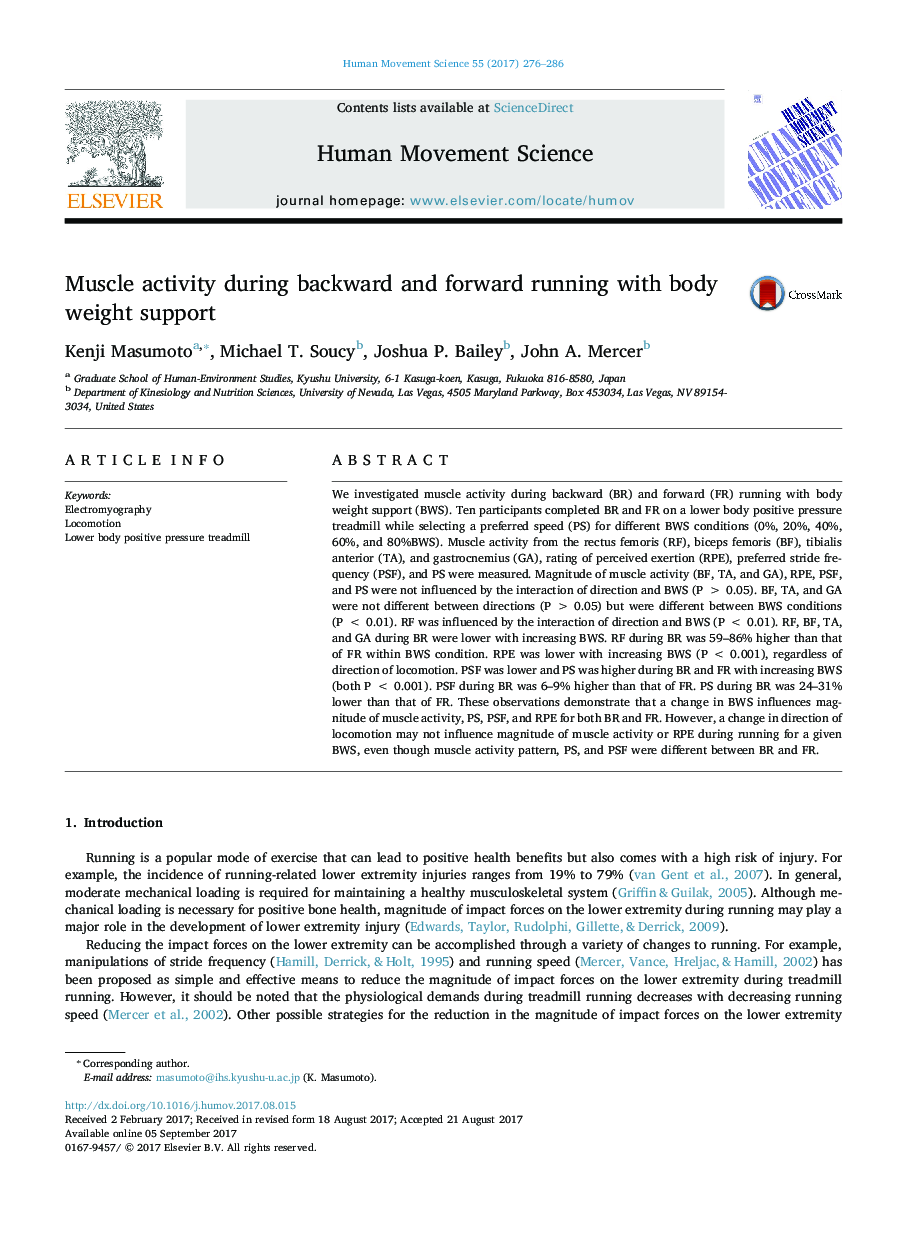| Article ID | Journal | Published Year | Pages | File Type |
|---|---|---|---|---|
| 5041951 | Human Movement Science | 2017 | 11 Pages |
â¢We evaluated effects of body weight support (BWS) and direction on muscle activity.â¢A change in BWS influences magnitude of muscle activity during running.â¢A change in direction influences muscle activity pattern during running with BWS.
We investigated muscle activity during backward (BR) and forward (FR) running with body weight support (BWS). Ten participants completed BR and FR on a lower body positive pressure treadmill while selecting a preferred speed (PS) for different BWS conditions (0%, 20%, 40%, 60%, and 80%BWS). Muscle activity from the rectus femoris (RF), biceps femoris (BF), tibialis anterior (TA), and gastrocnemius (GA), rating of perceived exertion (RPE), preferred stride frequency (PSF), and PS were measured. Magnitude of muscle activity (BF, TA, and GA), RPE, PSF, and PS were not influenced by the interaction of direction and BWS (PÂ >Â 0.05). BF, TA, and GA were not different between directions (PÂ >Â 0.05) but were different between BWS conditions (PÂ <Â 0.01). RF was influenced by the interaction of direction and BWS (PÂ <Â 0.01). RF, BF, TA, and GA during BR were lower with increasing BWS. RF during BR was 59-86% higher than that of FR within BWS condition. RPE was lower with increasing BWS (PÂ <Â 0.001), regardless of direction of locomotion. PSF was lower and PS was higher during BR and FR with increasing BWS (both PÂ <Â 0.001). PSF during BR was 6-9% higher than that of FR. PS during BR was 24-31% lower than that of FR. These observations demonstrate that a change in BWS influences magnitude of muscle activity, PS, PSF, and RPE for both BR and FR. However, a change in direction of locomotion may not influence magnitude of muscle activity or RPE during running for a given BWS, even though muscle activity pattern, PS, and PSF were different between BR and FR.
